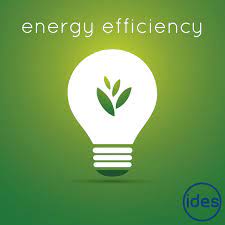What Is Energy Efficiency?
COURTESY : www.nrdc.org
Energy efficiency
Energy efficiency and energy conservation aren’t the same thing, but they have a similar goal: to reduce energy use. Here’s the difference. Energy conservation relies on people cutting back on activities that consume energy—by turning off lights or driving less or using appliances less often. Energy efficiency harnesses technology to help avoid or reduce energy waste so that you can still turn on the lights, drive, or wash your clothes but use less energy doing so. It really all comes down to smarter energy use.
Why Is It Important to Use Less Energy?
Using less energy through efficiency measures is good for the economy and your wallet. By reducing the amount of energy required for certain tasks, energy efficiency is also good for the planet. It can help to reduce air and water pollution caused by certain types of energy generation and avoid negative impacts on critical ecosystems—such as the obstacles a new hydroelectric dam could impose on migrating salmon. It can also relieve stress on the power grid.
Cutting Carbon Pollution
Boosting energy efficiency in buildings, vehicles, and appliances and equipment is an inexpensive, low-impact way to reduce climate pollution on a grand scale. One extremely effective way to cut carbon dioxide (CO2) emissions is through a more efficient home. Widespread use of efficient appliances, electronics, equipment and lighting, along with better insulation and other weatherization, could cut 550 million metric tons of carbon pollution a year by 2050—equal to the electric power emissions produced by Texas, New York, Florida, Illinois, Virginia, and California in 2016.

Call on Congress to create jobs and fight the climate crisis
TAKE ACTION
Creating Jobs
More than 2.2 million Americans have jobs in energy efficiency or clean energy production. That’s more than five times the jobs in the dirty energy industries, including coal, gas, and oil. In fact, about one in every six construction jobs in the country is connected to energy efficiency.
Lowering Bills
Energy-efficient appliances can save a U.S. household up to $500 a year on utility bills. People who live in the five least-efficient states (Wyoming, North Dakota, Alabama, South Dakota, and Mississippi) have seen their electric bills increase twice as much as those who live in the five most-efficient states (California, Oregon, Connecticut, Vermont, and New York), according to 2016 rankings. Low-income urban households have an energy burden—the proportion of income spent on energy—three times higher than that of higher-income households, partially due to lack of weatherization. Similarly, the energy burden on low-income rural families is nearly three times that of other rural households.
Improving Lives
Energy efficiency can also help people live healthier, longer lives. Cutting nationwide energy consumption by 15 percent for one year via efficiency measures could help save six American lives a day and avoid up to $20 billion in health-related problems. When power plants burn coal, oil, and natural gas, they release tiny particles into the air we breathe; these particles are linked to asthma, heart attacks, and lung cancer. Inside a home, inefficient ventilation and weatherization can also contribute to respiratory illnesses. Energy efficiency can even improve the comfort of everyday life, which may not be factored into benefit statistics.
Strengthening Independence
On a larger scale, energy efficiency can improve energy security, creating a more resilient power grid and making the country less dependent on foreign sources of fossil fuels.
Examples of Energy Efficiency
Ready to join the energy efficiency revolution? Here are some ways, large and small, to participate.
Get Smart About Energy Use
Start small by turning electronics off, tweaking your TV settings, adjusting temperature settings, and setting timers. Hunt down “energy vampires” that consume electricity even when idle.
Buy Efficient Home Appliances
Seeking out models labeled with Energy Star—a voluntary program managed by the U.S. Environmental Protection Agency and the Department of Energy with more than 18,000 partners—can save you $4.50 for every $1 spent on electricity. The Energy Star label can be found on 75-plus types of products, including major appliances, lighting, and home electronics.

Replacing older appliances with energy-efficient models can save the average household more than $500 a year, thanks to national energy efficiency standards, and those savings could climb to $840 by 2030. Consumers are getting a double bonus, because appliances are also becoming more affordable; today a new fridge uses 75 percent less energy and, adjusting for inflation, costs less than half as much as it did in the 1970s. Meanwhile, Energy Star clothes washers use one-fourth less energy and one-third less water than standard models, cutting another utility cost.
For almost 30 years, the blue and white Energy Star label has been the gold standard for identifying the more energy-efficient appliances, buildings, and equipment. Experts estimate that the program has saved $430 billion on energy bills and reduced carbon pollution by 2.7 billion metric tons, equal to the emissions of about 670 coal-fired power plants in a year.
Heat and Cool Efficiently
If just 1 in 10 households bought Energy Star–labeled heating and cooling equipment, we’d avoid pumping 13 billion pounds of greenhouse gas emissions into the environment each year, equivalent to the annual tailpipe emissions of 1.2 million cars. Energy Star–labeled air conditioners, central air-conditioning units, and heat pumps can also cut your energy bill by more than $160.
Today’s Energy Star-labeled ceiling fans with light fixtures are 60 percent more efficient than conventional units. Ceiling fans can make a room feel 10 percent cooler while using just 10 percent of the energy of a central air conditioner.
Super-efficient electric heat pumps are a cleaner and more affordable option for heating and cooling homes and businesses, particularly where oil and propane furnaces are the norm. Heat pumps move heat from a cool space (like the cold outdoors) to a warm space (inside a building), making the cool space cooler and the warm space warmer—many times more efficiently than burning fossil fuels to generate heat. In the vast majority of climates, heat pumps can be used as the only heat source, with no other heating device needed in the house as backup. They are also a far more efficient appliance for cooling than either the standard window air-conditioning unit or central air, and they come in different forms, depending on your home’s setup: A central heat pump, for example, sits in the same spot, uses the same air ducts and thermostats, and takes the place of a central AC.
As climate change fuels more extreme weather conditions, more and more people are making the move to purchase their first air conditioner. This is the best time for you to instead buy a heat pump that can replace both your standard AC and furnace and help reduce your utility bill. Alternatively, if you wait to think about your next heating system until your gas furnace or boiler goes out, you’ll face the prospect of either replacing the old gas heater with a new one—and forgoing all the benefits of getting off of gas heat.
With home and office emissions accounting for 13 percent of the nation’s annual greenhouse gas emissions, you will also be doing your part to help curb the impacts of climate change by reducing the use of fossil fuels. Other benefits include cleaner air inside your home and helping to lessen the pressure on your city’s electrical grid, especially during heat waves. So while the upfront cost of a heat pump might be slightly more than a standard AC without a heating function, the long-term benefits make it a worthwhile investment for your wallet and the environment.
Finally, keeping cool in summer and warm in winter requires far less energy when your house is well sealed against the elements. Consider consulting with a weatherization professional to find drafts, seeking assistance from your local utility or government, or going DIY. Then add insulation where you need it.
Switch to LED Bulbs
Brightening rooms with efficient LED bulbs can save households about $100 a year, adding up to national savings of around $12.5 billion (if LEDs were universally adopted) while cutting carbon emissions generated by electricity production.
More than 150 varieties of LED bulbs—the most efficient lighting choice—are on the market. They use up to 90 percent less energy than older, incandescent bulbs, allowing you to save up to $100 on energy bills over a bulb’s lifetime.

Energy Efficiency: For Today and Tomorrow
To help consumers, NRDC has long worked to create and champion state and federal energy efficiency standards for buildings and appliances, collaborate with cities to cut energy waste in larger buildings, encourage utilities to promote efficiency, and push for efficiency improvements in building codes. However, many energy efficiency policies and standards are under attack; the Trump administration has proposed slashing budgets for a range of related initiatives, from weatherization assistance to the government’s energy research. The administration has also put forward “reforms” to popular programs such as Energy Star that could undermine its success, while delaying time lines for energy efficiency standards. By speaking out against these rollbacks and changing our daily habits, we all can play a role in creating an energy-efficient future that improves the health of people and the planet.




